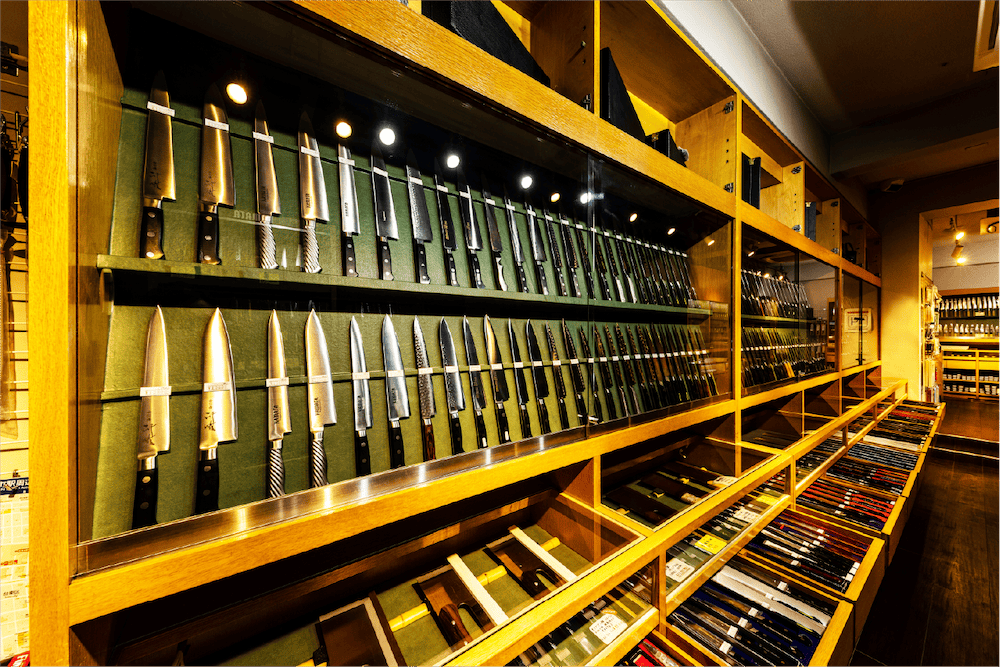Shinogi” is a technical term for knives, Japanese swords, and other cutting tools, and refers to a part of the blade shape. Specifically, it is the area where the thickness of the blade changes and is the boundary between the plane of the blade and the cutting edge (kirigaki).
The characteristics and roles of shinogi are explained below:
- Part of the blade shape: The shinogi is a ridge-like area extending from the center of the blade toward the cutting edge. This divides the blade into two parts: the flat part and the cutting part.
- Increased strength and durability: The shinogi increases the overall strength and durability of the blade. This is because the change in blade thickness distributes the stresses across the entire blade.
- Improved sharpness: Shinogi control the shape of the blade, allowing it to form a sharp cutting edge. This improves the sharpness of the knife.
- Design element: Shinogi is also an important element in the design of knives. Especially on Japanese swords, beautiful shinogi lines contribute to the sword’s visual appearance.
- Sharpening guide: When sharpening a knife or Japanese sword, the shinogi is a guide. The shinogi is clearly visible, making it easier to sharpen the blade at the correct angle.
Shinogi is an important structural element in the manufacture and use of kitchen knives and Japanese swords, and greatly affects the performance and beauty of the blade. Especially in traditional Japanese blades, the shape and finish of the shinogi is an important indicator of craftsmanship and blade quality.
*This is a translation by a translation tool.

